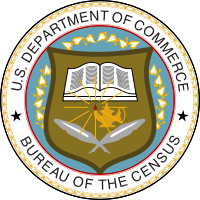The Nation Is Making No Progress in Closing the Racial Gap in Standardized Test...
The most striking statistic is that only 4 percent of all Black test takers were rated ready for college-level courses in all four areas of English, mathematics, science, and reading. Whites were more than six times as likely as Blacks to be prepared for college-level work in all four areas.
How the Racial Digital Divide Impacts Online Education During the Pandemic
A new Census survey finds that only 61.6 percent of Black households with children in K-12 education said they had the technology to allow children to do their online schoolwork at all times. For White households, nearly 73 percent had total access to the online education offered for their children.
Data Shows Huge Racial Disparities in Impact of COVID-19 Virus
According to the Centers for Disease Control and Prevention, Blacks make up 13 percent of the U.S. population but over 33 percent of the patients admitted to hospitals with the COVID-19 virus. In some cities Blacks are dying from the virus at rates double their percentage of the population.
Racial Differences in the Gender Wage Gap
A new report from the Center for America Progress finds that White women earn 79 percent of what is earned by White men. But African American women earn only 62 cents to the dollar compared to the earnings of White men.
Racial Discrimination Directed Against Children Can Impact Their Mothers’ Health
The study found that when biological and environmental factors affecting women's health are accounted for, there tends to be a decline in a middle-aged woman's health corresponding to the level of discrimination experienced by their children.
George Washington University Study Finds a Major Racial Gap in Financial Literacy
The results of the survey found that African-American adults answered 38 percent of the questions correctly, compared to 55 percent of White adults. Only 28 percent of African American adults answered over one-half of the questions correctly. For White adults, the figure was 62 percent.
The Racial Poverty Gap and Its Impact on Higher Education
In 2018, nearly 30 percent of all African Americans below the age of 18 were living in poverty. For non-Hispanic White children, the rate was 8.9 percent. Many Black children from impoverished backgrounds do not even consider higher education due to the perceived cost.
Georgetown University Study Finds the Deck Is Stacked Against Black Workers
New research from the Georgetown University Center on Education and the Workforce finds that White workers have benefited from historical and systemic educational and economic advantages to build a disproportionate edge in the educational pipeline and the workforce that will continue to last for decades.
New Report Offers Statistics on Pell Grant Recipients by Racial and Ethnic Group
More than 57 percent of African American undergraduate students received a federal Pell grant in the 2015-16 academic year. For White undergraduates, 31.5 percent of all undergraduates received a federal Pell grant. Blacks received 22.7 percent of all Pell Grants in the 2015-16 academic year.
The Racial Gap in Participation in High School AP, IB, and Dual Enrollment Programs
According to a new report released by the U.S. Department of Education, White high school students are far more likely than their Black peers to take Advanced Placement (AP) classes, international baccalaureate (IB) courses or participate in dual enrollment courses with colleges.
The Snail-Like Progress of Black Scholars on College and University Faculties
In 1997, Blacks made up 5 percent of all college and university faculty, compared to 6 percent 20 years later in 2017. At this rate of progress, the percentage of Blacks on the faculties of American colleges and universities would not reach parity with the percentage of Black enrollments for 160 years.
Racial Differences in College Persistence and Retention Rates
A new report from the National Student Clearinghouse Research Center finds that college student persistence and retention rates are on the rise. But there remains significant differences in these rates between Blacks and Whites.
New Report Finds Residential Segregation Remains Rampant in the United States
The Center for American Progress reports that significant disparities still exist between African Americans and non-Hispanic Whites in terms of access to homeownership. This, in turn, hinders the ability of African American families to send their children to quality public schools.
The Economic and Educational Status of African Americans a Year After Earning a Bachelor’s...
The median income of recent African American college graduates was $36,000. For Whites, the median income was $40,000. This income gap for recent college graduates is far narrower than the overall Black-White income gap. This shows the value of higher education in reducing income equality.
Nationwide Study Finds Major Racial Gap in School Suspensions and Expulsions
The study offers a comprehensive look at racial disparities in school discipline involving expulsion or suspension from school at secondary educational institutions throughout the United States. The study examined disciplinary records involving nearly 16,000 middle schools and more than 18,000 high schools all across the country.
Harvard University Making Strides In Faculty Diversity
Since 2004, tenured-track appointments at Harvard University are up 54 percent for underrepresented minorities, which is particularly striking since the overall number of tenure-track faculty has decreased by 18 percent over the same time period.
Study Finds Severe Racial Gap Between Who Causes Air Pollution and Who Breathes It
The researchers found that air pollution is disproportionately caused by the consumption of goods and services by White Americans, but disproportionately inhaled by Black and Hispanic Americans.
Texas Tech Medical School Will No Longer Use Race as a Factor in Admissions...
This is the first agreement reached between the Trump administration and a college to forgo using race as a factor in the admissions process.
University of Kentucky to Remove a Mural That Is Offensive to Many Black Students
During the Great Depression, Ann Rice O’Hanlon painted a 38 feet wide, 11 feet tall mural on Kentucky history in Memorial Hall. The mural depicts enslaved African Americas hunched in a field, Black musicians playing for White dancers, and a Native American threatening a White settler with a tomahawk.
University of Maryland Baltimore County Seeks Greater Diversity in the Public Policy Field
The University of Maryland Baltimore County School of Public Policy has partnered with the Association of Public Policy Analysis and Management (APPAM), a national organization that fosters excellence in research, analysis, and education in public policy.
The Stubborn Racial Gap in Degree Attainment Rates in the United States
For Black students who entered postsecondary education in the 2011-112 academic year, 9.5 percent earned an associate's degree and 22.7 percent were awarded a bachelor's degree by the Spring of 2017.
Sharp Drop in Black Enrollments at Public Colleges and Universities in Illinois
The number of African-American students enrolled at public colleges and universities in Illinois has fallen nearly 25.9 percent during the five-year period from 2013 to 2017. In contrast, enrollments are up for all other underrepresented groups.
The Racial Gap in Educational Attainment in the United States
Well more than one third, 38.8 percent, of non-Hispanic Whites over the age of 25, have obtained at least a bachelor’s degree. For African American adults, 25.2 percent have earned a bachelor’s degree or higher.
African Americans Making Little Progress in College Sports Administration and Coaching
According to a recent report from the Institute for Diversity and Ethics in Sport (TIDES) at the University of Central Florida, Blacks are 45 percent of the football players in Division I but only 6.9 percent of the head football coaches. This was down from 7.7 percent in the prior year.
Blacks Making Only Snail-Like Progress in Closing the Racial Gap in Faculty Posts
In 2017, Blacks made up 5.5 percent of all instructional faculty members in U.S. higher education. Eight years earlier in 2009, Blacks were 5.4 percent of all instructional faculty. In 2017, Blacks were only 3.8 percent of all full professors.
The Racial Gap in Traditional High School Completion Rates
The highest Black student high school graduation rate was in the state of Alabama. The lowest high school graduation rate for Blacks was in the state of Minnesota. Wisconsin had the largest racial gap in high school graduation rates of 25.7 percentage points.
U.S. Senators Ask for Advice on How to Address Racial Disparities in Student Debt
Recently, a group of four United States senators issued a statement asking for expert advice on how to address the racial disparities in student debt. African American college graduates are more likely to default on student loans than White college dropouts.
Florida State University Study Finds Racial Disparity in Flu Shots Among Adolescents
During the winter of 2014-15, more than 710,000 people were hospitalized for influenza and there were 80,000 flu-related death. Researchers had hoped that after the passage of the Affordable Care Act that the racial disparity in flu vaccinations would disappear. It has not.
African Americans Have Closed the Racial Gap in High School Dropout Rates
In 2016, 6.2 percent of all African Americans ages 16 to 24 did not have a high school diploma and were not enrolled in school. This so-called status dropout rate has dropped significantly for African Americans since the turn of the century.
African Americans Making Only Snail-Like Progress in Doctoral Degree Awards
If we restrict the figures to citizens and permanent residents we find that African Americans earned 6.7 percent of all doctoral awards in 2017. Therefore, African Americans earned about one half the number of doctorates that would be the case if racial parity with the U.S. Black population prevailed.
College Athletic Powerhouses Earn a Grade of D in Achieving Racial Equity in Leadership...
At the 130 colleges and universities that make up the Football Bowl Subdivision of Division 1 of the National Collegiate Athletic Association, in the fall of 2018 African Americans made up 3.8 percent of the presidents and 9.2 percent of the athletics directors.
Racial Differences in Interactions Between Children and Parents in American Households
The data show that 75.6 percent of non-Hispanic White parents read to their young children at least five days a week. In African American households, only 54.5 percent of parents read to their young children at least five days a week.
Princeton University’s New Program Aims to Diversify the Architecture Field
Less than 2 percent of the nation's registered architects are Black. To increase diversity in the field, Princeton University has launched its ArcPrep program that provides support, guidance, and academic and cultural enrichment to high school students who are typically underrepresented in the discipline.
A Major National Initiative to Close the College Achievement Gap by 2025
The Association of Public and Land-grant Universities has organized a collaborative effort in which 130 public universities and systems will work together to increase college access, close the achievement gap, and award hundreds of thousands more degrees by 2025.
The Racial Scoring Gap on the SAT College Entrance Examination
The results showed that only 21 percent of African American test takers met the college and career readiness benchmark for both reading and mathematics. Nearly 60 percent of Whites met the readiness benchmarks in both reading and mathematics.
The Racial Poverty Gap and Its Impact on Higher Education
In 2017, nearly 9 million African Americans, 21.2 percent of total Black population, were living below the official poverty line in the United States. Obviously this huge group of African Americans will face difficulty in obtaining higher education, a path that could lead them out of poverty.











































